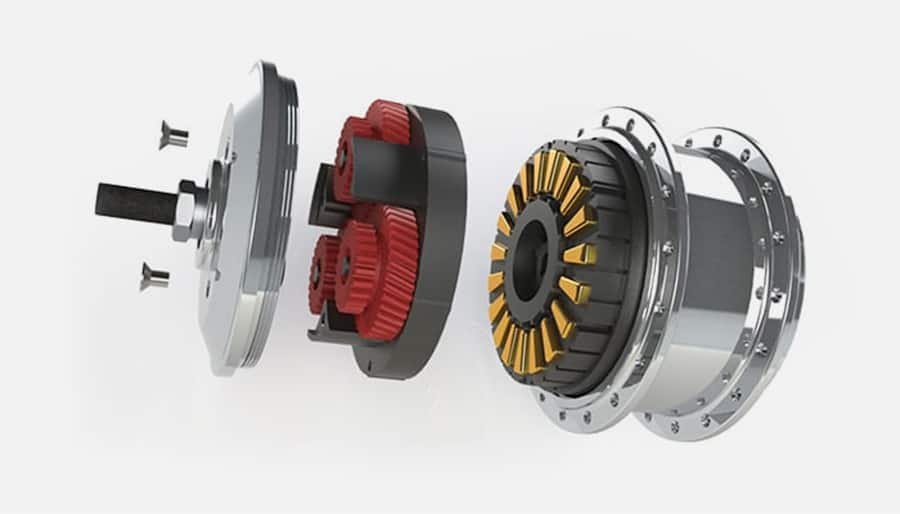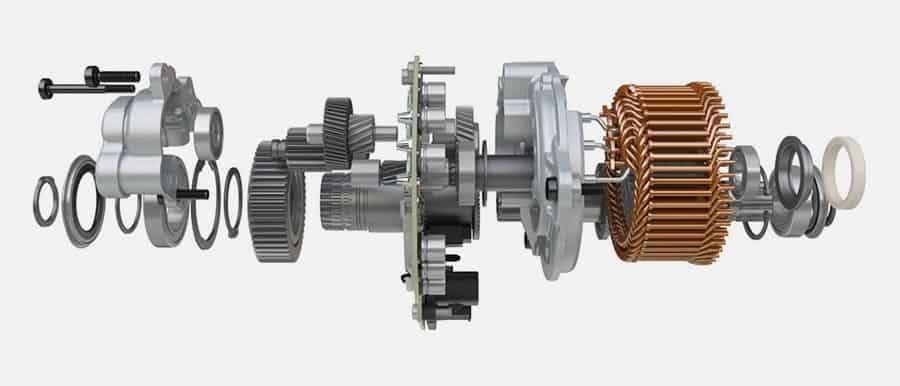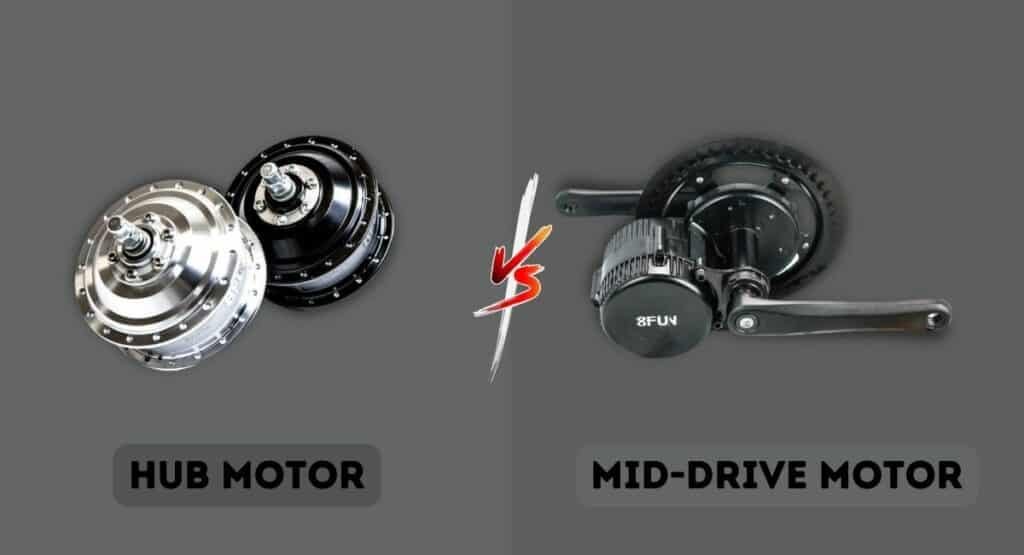There are three main types of electric bike motors: direct-drive hub motors, geared hub motors, and mid-drive motors. Each type has its own advantages and disadvantages, and choosing the right motor depends on various factors such as the rider’s needs, terrain, and budget. Direct-drive hub motors are the simplest and most reliable type of motor, but they are also the heaviest and least efficient. Geared hub motors are lighter and more efficient than direct-drive hub motors, but they are also more complex and require more maintenance. Mid-drive motors are the most advanced and versatile type of motor, but they are also the most expensive.
Understanding the different types of electric bike motors is essential for anyone who is considering buying an electric bike or upgrading their current bike. By knowing the pros and cons of each type, riders can make an informed decision and choose a motor that best suits their needs and preferences. In the following sections, we will explore each type of motor in detail and provide useful tips and recommendations for selecting the right motor for your electric bike.
Types of Electric Bike Motors
Hub Motors

Hub motors are the most common type of motor found in electric bikes. They are housed in the hub of the wheel, either the front or the rear, and provide the power to turn the wheel. They are usually brushless and come in two varieties: geared and direct drive.
Geared hub motors are smaller and lighter than direct drive hub motors, making them a popular choice for electric bike manufacturers. They have a higher torque output, which means they can handle steeper hills and heavier loads. Direct drive hub motors, on the other hand, are larger and heavier, but they are more efficient and have a longer lifespan.
One of the advantages of hub motors is that they are relatively simple and easy to maintain. They also provide a smooth and quiet ride since they don’t have any gears or chains. However, they can be less efficient than other types of motors, especially when climbing hills or carrying heavy loads.
Mid-Drive Motors

Mid-drive motors are becoming increasingly popular in electric bikes. They are located at the bottom bracket, where the pedals attach to the bike frame, and provide power directly to the chain. This means that the motor can take advantage of the bike’s gears, which makes it more efficient and better suited for climbing hills.
Mid-drive motors are usually more powerful than hub motors, with a higher torque output and a wider range of power options. They are also more efficient, which means they can provide a longer range on a single charge. However, they are more complex and expensive than hub motors, and require more maintenance.
One of the advantages of mid-drive motors is that they provide a more natural riding experience. Since the power is delivered directly to the chain, the bike feels more like a traditional bike, with the rider providing the pedal power and the motor providing assistance. They are also better balanced than hub motors, since the weight of the motor is located in the center of the bike.
Other Types of Motors
There are other types of motors used in electric bikes, although they are less common than hub and mid-drive motors. For example, there are friction drive motors, which use a roller to drive the wheel, and there are also pedal-assist motors, which provide assistance only when the rider is pedaling.
Friction drive motors are simple and lightweight, but they can be less efficient and less powerful than other types of motors. Pedal-assist motors are popular in Europe and Asia, where they are often used for commuting and touring. They provide a more natural riding experience, since the motor only provides assistance when the rider is pedaling.
Overall, the type of motor you choose for your electric bike will depend on your needs and preferences. Hub motors are a good choice for those who want a simple and reliable motor, while mid-drive motors are better suited for those who want a more powerful and efficient motor. Other types of motors may be suitable for specific applications, such as commuting or touring.
Hub Motors
Hub motors are one of the two most common types of motors found on electric bikes, the other being mid-drive motors. Hub motors are located in the center of either the front or rear wheel. They work by spinning the wheel directly, making them a simple and reliable option for e-bikes.
Direct Drive Hub Motors
Direct drive hub motors are the simpler of the two types of hub motors. They don’t have any gears, meaning that the motor spins at the same speed as the wheel. This can make them less efficient at low speeds, but they offer a smoother ride and require less maintenance.
Direct drive hub motors are typically larger and heavier than geared hub motors, but they also offer more power. They can be found on both front and rear wheels, but are more commonly found on the rear wheel. This is because they offer better torque, making them better suited for climbing hills and carrying heavier loads.
Geared Hub Motors
Geared hub motors are a more complex option than direct drive hub motors. They have internal planetary gears that reduce the speed of the motor, allowing it to spin faster and more efficiently than the wheel. This makes them more efficient at low speeds, but they can be noisier and require more maintenance than direct drive hub motors.
Geared hub motors are typically smaller and lighter than direct drive hub motors, making them a good option for front wheels. They offer less power than direct drive hub motors, but they are still a good option for most riders. They are also a good option for riders who want a more efficient motor that requires less pedaling.
Overall, hub motors are a great option for riders who want a simple and reliable electric bike. They are easy to use and require minimal maintenance, making them a great option for commuters and casual riders. Direct drive hub motors are a good option for riders who want more power, while geared hub motors are a good option for riders who want more efficiency.
Mid-Drive Motors
Mid-drive motors are another type of electric bike motor that are becoming increasingly popular. Unlike hub motors, mid-drive motors are mounted directly to the crankshaft and the drivetrain, which allows for more efficient use of power and better handling.
One advantage of mid-drive motors is that they provide better weight distribution, which makes for a more stable and balanced ride. This is because the motor is mounted in the center of the bike, which helps to distribute the weight more evenly between the front and rear wheels. This also means that the bike is less likely to tip over when turning or maneuvering at low speeds.
Another advantage of mid-drive motors is that they allow for better control over the speed and power output of the bike. This is because the motor is directly connected to the drivetrain, which means that the rider can adjust the gear ratio to fine-tune the power output to their specific needs. This also means that mid-drive motors are more efficient, as they can use the gears to keep the motor operating at its optimal speed and power output.
However, one disadvantage of mid-drive motors is that they can be more expensive than hub motors. This is because mid-drive motors require more complex engineering and manufacturing, which adds to the overall cost of the bike.

Here is a comparison table of mid-drive motors and hub motors:
| Mid-Drive Motors | Hub Motors |
|---|---|
| Mounted to the crankshaft and drivetrain | Mounted to the wheels |
| More efficient power usage | Less efficient power usage |
| Better weight distribution | Weight can be unbalanced |
| More expensive | Less expensive |
Factors to Consider When Choosing an Electric Bike Motor
Power Output
The power output of an electric bike motor determines how much assistance the motor provides to the rider. Most electric bikes have motors with power outputs ranging from 250 watts to 750 watts. Higher power output motors will generally provide more assistance to the rider, but they may also be heavier and more expensive. It is important to choose a motor with a power output that is appropriate for the intended use of the bike.
Torque
Torque is the force that the motor applies to the bike’s drivetrain. A higher torque motor will generally provide better acceleration and hill-climbing ability. However, high torque motors may also be less efficient and may drain the battery more quickly. It is important to choose a motor with an appropriate torque rating for the intended use of the bike.
Efficiency
The efficiency of an electric bike motor determines how much of the battery’s energy is converted into motion. More efficient motors will generally provide longer range and better performance. Mid-drive motors are generally more efficient than hub motors, as they are able to use the bike’s gears to optimize power output. It is important to choose a motor that is efficient and suitable for the intended use of the bike.
Noise Level
The noise level of an electric bike motor can be an important consideration for some riders. Hub motors tend to be quieter than mid-drive motors, as they do not have as many moving parts. However, some mid-drive motors are designed to be quiet, and noise level may not be a significant concern for all riders.
Weight
The weight of an electric bike motor can be an important consideration, as it can affect the handling and performance of the bike. Hub motors tend to be heavier than mid-drive motors, as they are integrated into the wheel. However, mid-drive motors can add weight to the bike’s frame, which can affect handling. It is important to choose a motor that is appropriate for the intended use of the bike.
Cost
The cost of an electric bike motor can vary significantly depending on the type of motor and the manufacturer. Hub motors tend to be less expensive than mid-drive motors, but mid-drive motors may offer better performance and efficiency. It is important to choose a motor that is within the desired budget and provides the desired level of performance. Overall, choosing the right electric bike motor requires consideration of a number of factors, including power output, torque, efficiency, noise level, weight, and cost. By carefully evaluating these factors and selecting a motor that is appropriate for the intended use of the bike, riders can enjoy the benefits of electric-assist cycling.

